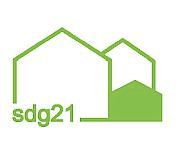The ecovillage Sieben Linden has its own Youtube channel:
www.youtube.com/channel/UCRXjeUJLywVSoh8de2bbvOw/featured
There are several films about the ecovillage.
In addition to the motivation and background of the ecovillage movement, the film also gives a good impression of the Sieben Linden ecovillage.
The text on vimeoHow can a world beyond growth, competition and profit look like? The multimedia project "Degrowth in Bewegung(en)" shows which initiatives and movements develop and live social, ecological and democratic alternatives.
In the ecovillage Sieben Linden we met Christiane Kliemann, who tells us in an interview what makes an ecovillage, how ecovillages are politically engaged and where the relation to degrowth is.
Here you can go directly to the article "The Ecovillage Movement: Degrowth as a lived reality?" by Christiane Kliemann: degrowth.com/en/dib/degrowth-in-movements/oekodoerfer/"
Film excerpt from "A New Us - Ecovillages and Ecological Communities in Europe" by Stefan Wolf.
(2011)
DVD edition of "Life under palms"
www.menschen-träume-taten.de
Project Info: http://sdg21.eu/db/oekodorf-sieben-linden
Keywords: Greening / climate adaptation, Movies, Movies 11 to 45 Min, Near-natural open space design, News Blog Saxony-Anhalt, Permaculture, Transition Town, urban gardening, Housing projects

